Planting for exposed sites
There are always a number of considerations that need to be made when beginning to design a planting scheme. The quality, makeup and acidity of the soil, the drainage of the site, and whether an area has sufficient run-off, or whether the area is prone to waterlogging. Precipitation itself is also important to consider, as well as the direction the area will face, and how much direct sunlight the green space will receive. Among many others, one other major characteristic of a site, which must be considered before selecting plants and designing a scheme, is the site’s shelter, or conversely, its exposure.
Exposed sites are defined as areas with little to no protection from wind, or from sunlight. This can be areas such as hillsides, including sites of high altitudes without surrounding valleys or hills to mitigate wind, or reduce hours of direct sunlight. Exposed sites can also include large expanses of flatland for similar reasons, lacking in natural barriers that are provided by undulation in the landscape. Other factors can also impact a site’s exposure, such as the presence or absence of other natural barriers that provide a windbreak or shade, like forests or hedgerows, or even man-made barriers, such as buildings. Coastal sites are likely to suffer from the effects of elemental exposure, due to their proximity to offshore winds, and the large, flat expanse of the sea. Coastal sites however come with several other unique considerations and challenges that are not covered by exposure alone, and so for specific advice and recommendations on coastal planting, read our coastal tolerant planting inspiration here.
It’s important to identify the extent of a site’s exposure to wind and to sunlight at the early stages of designing, to ensure that the plants chosen are well suited to withstand the more extreme weather conditions, and that the green space is best equipped to survive long term.
What happens to plants exposed to wind and sunlight?
Extreme weather conditions, including wind and sunlight, can have varied but damaging effects on plants that are not suited to the climate. Most plants enjoy a gentle breeze, as it helps to ward off pests and diseases and provides ventilation in order for the plant to undergo its natural processes. Excessive wind however can have a number of negative effects on plants not equipped to deal with it. Firstly, and most obviously, strong winds can inflict quite severe physical damage to plants, tearing off flower heads, damaging foliage, and breaking stems and branches. This sort of physical force can cause trauma for plants, and may inhibit further growth, cause permanent damage, or even kill the plant altogether. When plants are damaged in this way, it also makes them more susceptible to pests and diseases, making the plant less resilient in the long run. Additionally, strong, persistent winds causes plants to close their leaf pores, or ‘stomata’, to reduce excessive water loss. This limits the plants’ ability to take in carbon dioxide, which is a vital component of photosynthesis, and inhibits plant growth by up to 50%. Wind also removes moisture from the soil, which is another vital component to photosynthesis, and required for the plant to maintain its shape and cell rigidity. Another symptom of areas with high winds is the ‘wind chill factor’. Particularly in winter, the wind can cause a drop in the air temperature, resulting in far colder environments for plants to deal with. This can cause freezing, and further frost damage to plants, inhibiting their overall vitality.
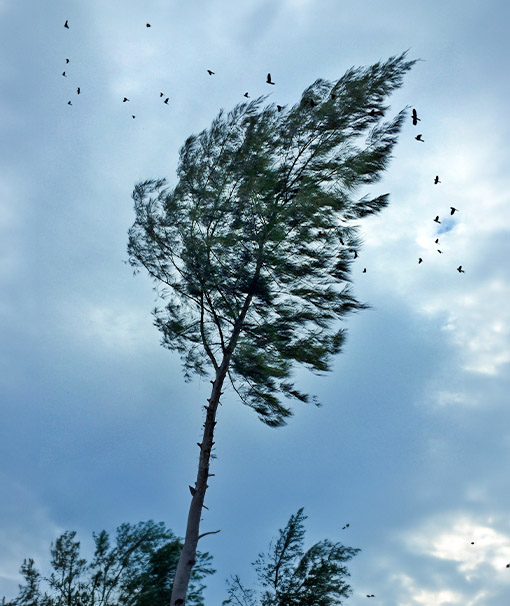
Sunlight is essential to most plants, as it is the driving force behind photosynthesis, which is how plants create the glucose they need. The chlorophyll contained within the cells of the plant use the light energy from the sun to convert carbon dioxide and water into glucose and oxygen. Not only is this process important for plants, but it provides us with the very oxygen we need to breathe! Whilst it is important for plants to survive, too much sunlight can end up causing damage to varieties not suited to direct sunlight. If a plant has evolved to grow under the canopy of a wooded area for example, it will most likely struggle in an exposed planting where it suddenly receives sunlight for large amounts of the day. Excessive sunlight in plants which have not evolved to deal with prolonged exposure to solar radiation can cause a number of issues, many of which can result in the loss of the plant. Firstly, excessive sunlight can cause a buildup of excessive energy in the cells of the leaves, which results in damage to the chloroplasts (which contain the light absorbing chlorophyll), and can reduce the efficiency of subsequent photosynthesis. This absorption of excess solar radiation also causes the plant to convert the energy into heat energy, which causes further damage to leaf cells, and can cause the bleaching and scorching of the foliage which is often attributed to excess sunlight. Furthermore, excess sunlight also means excess heat exposure, which can dry out leaves resulting in a turgor loss as the cells try to conserve the moisture contained within them, causing a loss of cellular structure and results in the plant wilting.
Our plant picks for exposed sites
Fortunately, there are a number of plants with a general level of resilience, to wind, drought tolerance, and direct sun exposure. Appropriate plant choice is the first port of call for ensuring your green space will be able to survive long-term. Below are a few options for wind tolerance, cold tolerance, and sun tolerance.
Wind tolerance
In general, plants that can deal with the effects of drought can often also be resistant to damage caused by wind. Typical characteristics of wind tolerant plants include smaller, narrower leaves, leathery/waxy leaves, hairy leaves, or thicker leaves that are able to store more water. This is not always the case, but it is a general rule of thumb.
Brachyglottis ‘Sunshine’
Mound forming evergreen shrub which can grow to around 1.5m Tall. Produces silvery-green, hairy foliage, and bright yellow, daisy like flowers in summer. Copes well in windy conditions due to moisture-retaining, drought resistant properties, and can tolerate full sun or partial shade. Can tolerate cold temperatures of up to -5°c -10°c, which should be okay for most areas of the UK, but be careful when planting in northerly or high altitudes which are prone to excessive cold.
Ilex aquifolium
Known colloquially as ‘common holly’, this evergreen species features very strong, spiny, green foliage with spiked edges. Produces small white flowers in spring and summer, followed by its iconic bright red berries throughout autumn and winter on pollinated female varieties. Growth is slow, but can ultimately reach 10m in height. Extremely sturdy, and native to UK, tolerating most, if not all, UK climate conditions.
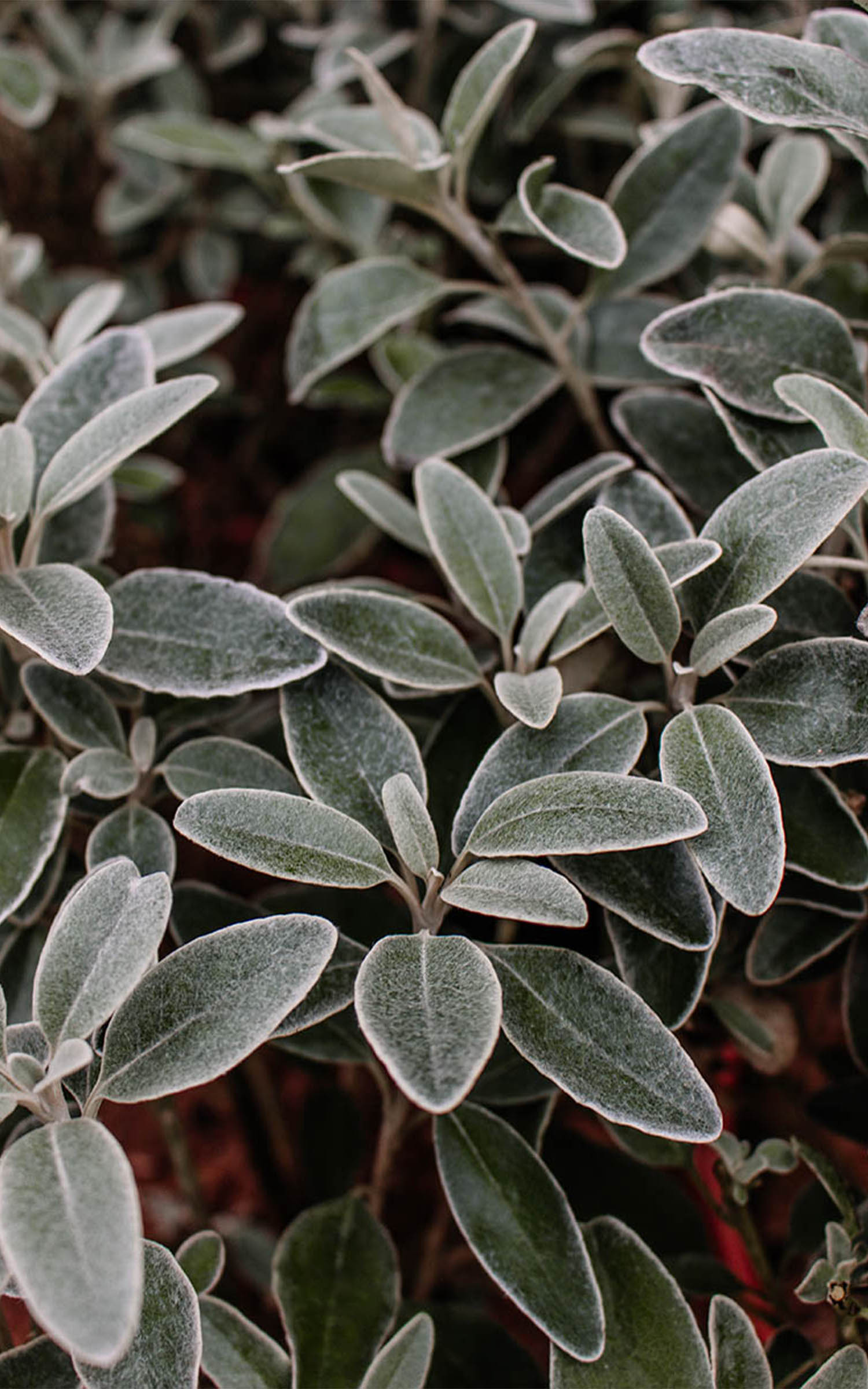
Brachyglottis ‘Sunshine’
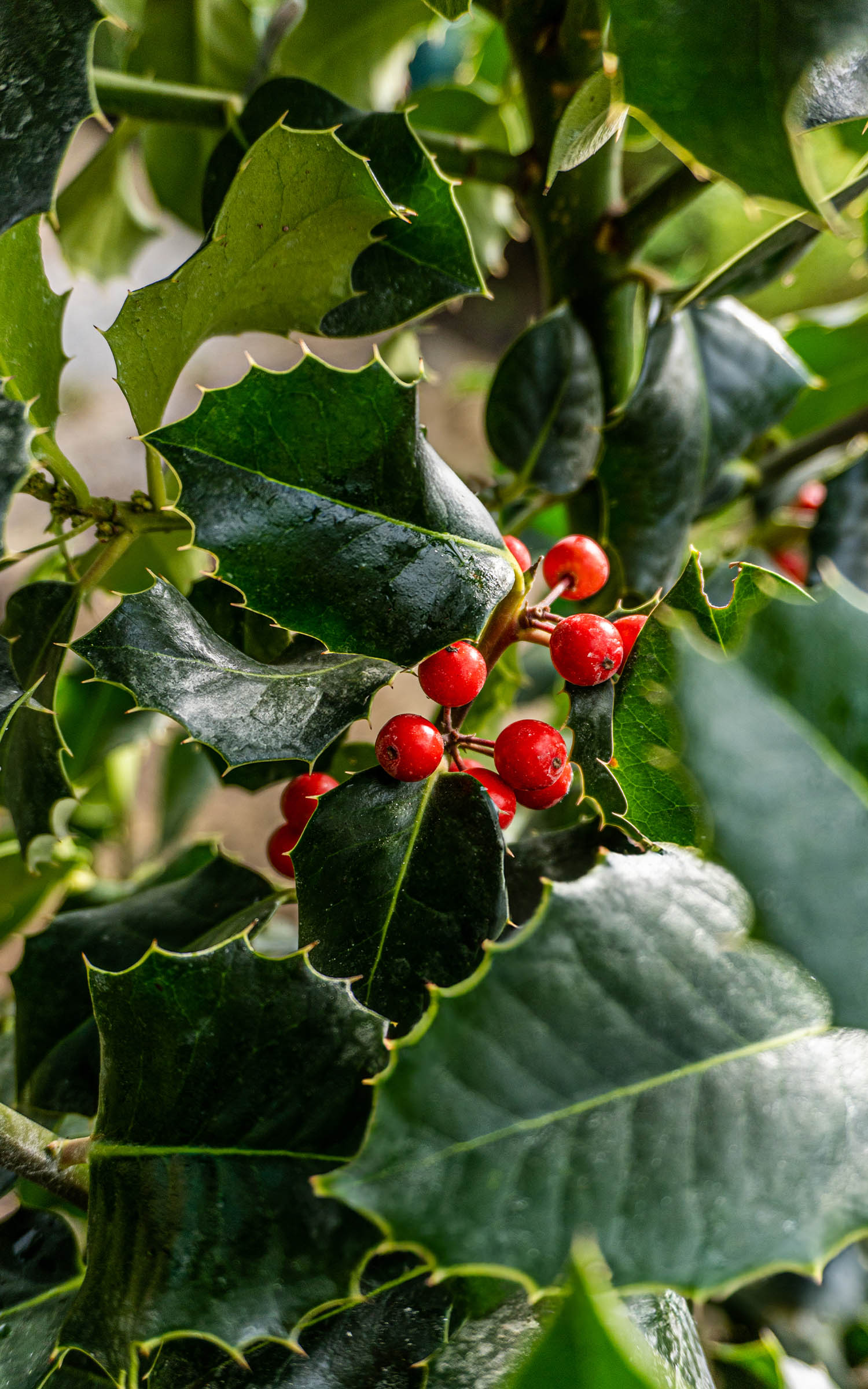
Ilex aquifolium
Taxus baccata
A native bushy evergreen shrub or tree, with dark-green, needle-like leaves. Small flowers present in spring, followed by fleshy red fruits on female varieties in autumn. The small surface area of its foliage aids in its wind-resistance, preventing the leaves from succumbing to any significant force from strong breeze. Extremely hardy, capable of surviving temperatures lower than -20°c, and can tolerate full sun in UK.
Elaeagnus x ebbingei
Dense evergreen shrub with large ‘metallic’ sea-green leaves with a scaly underside. Produces orange flowers in spring, and small white flowers in autumn. Drought tolerant, and can withstand strong breeze. It also tolerates full sun and salt-laden air, making it perfect for coastal planting. May need protection in particularly harsh winters, otherwise generally hardy.
Euonymus japonicus ‘Jean Hugues’
A small, dense, compact shrub that can work as an edge plant or be formed into a hedge. Features small, dark-green, glossy leaves, which work well to rebuff the impact of strong winds. Produces summer flowers, and occasional autumn berries. Will also tolerate full sun, and moderate cold. One of many plants in the same genus that will tolerate exposed planting.
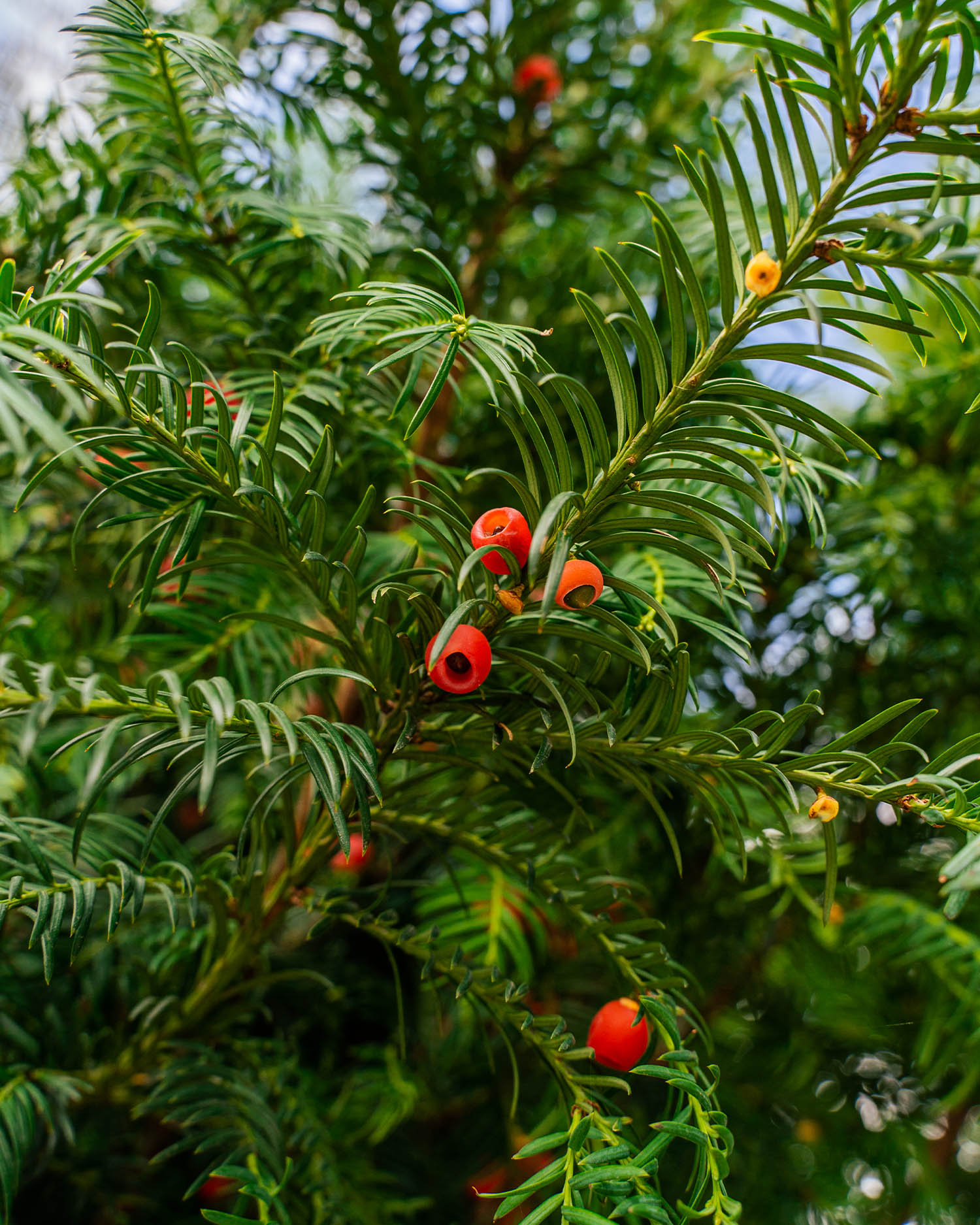
Taxus baccata
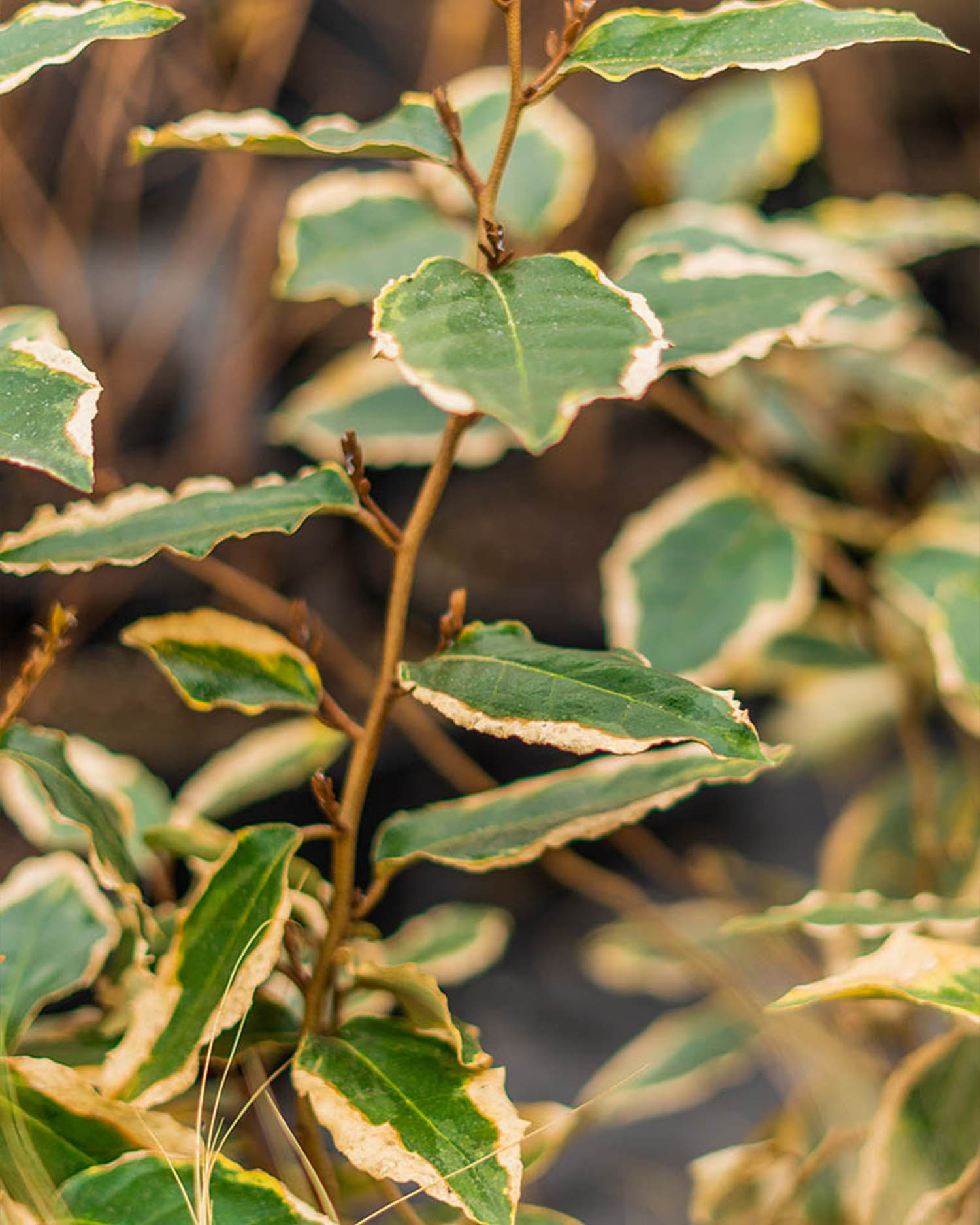
Elaeagnus x ebbingei ‘Viveleg’
Cold tolerance
Cold tolerant plants are particularly hardy plants which are able to withstand sites which are particularly prone to cold temperatures in the winter, whilst being able to withstand a regular amount of breeze. The ability of each plant to withstand extreme temperatures is measured on a rating of ‘hardiness’. This ranges from H1a to H7, with H7 being the highest level of hardiness. The scale was devised by the Royal Horticultural Society in 2012, and covers temperatures of 15°C and above, down to -20°C and below. The RHS hardiness rating covers the UK, whereas a separate scale devised by USDA (United States Department of Agriculture) covers the USA.
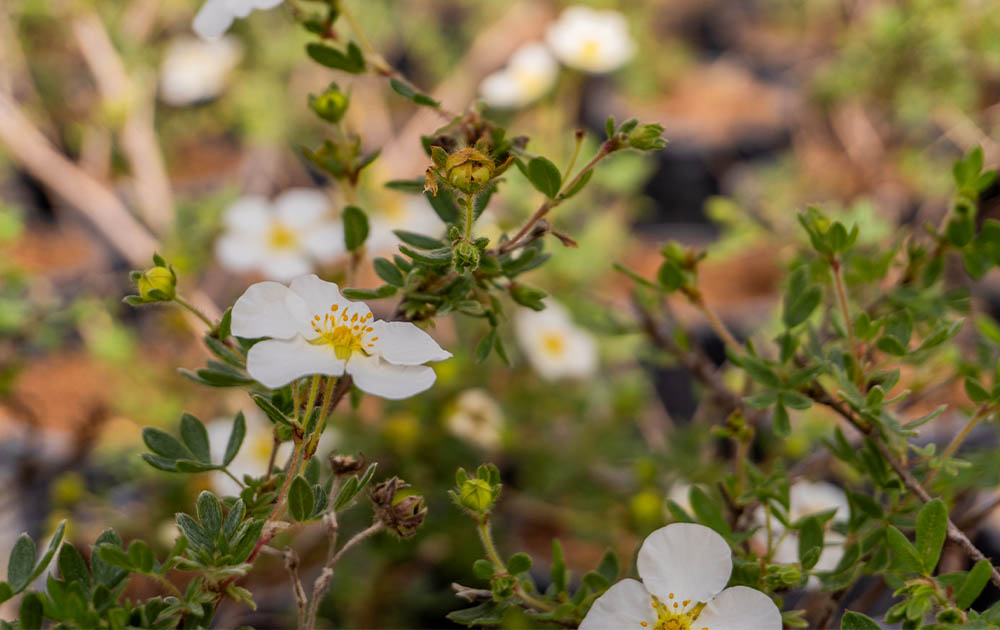
Potentilla fruticosa ‘Abbotswood’
Potentilla fruticosa ‘Abbotswood’ (H7)
A bushy, low growing deciduous shrub which features small, dark-green, pinnate foliage. Produces moderate-sized, white flowers which bloom throughout spring and summer. Will tolerate some exposed planting and full-sun, although flowers will fade faster without partial shade and will survive longer with moist soils. Grows well in coastal locations.
Crataegus monogyna (H7)
An extremely hardy deciduous shrub or tree which can grow up to 10m in length. Has thorny stems with dark-green, lobed leaves which turn gold in autumn. Produces white flowers in late spring, and dark red berries in autumn. Its glossy foliage makes it resistant to strong winds, and can thrive in both full sun and extreme cold. A perfect all-round plant for any type of garden.
Cornus sanguinea (H6)
Deciduous shrub that grows to around 3m tall. Has an upright habit, with striking red stems that provide winter interest despite the lack of foliage. Produces ovate leaves which turn deep red in autumn, with summer flowers and black autumnal berries. Can tolerate some breeze, as well as full sun or shade, but produces the brightest winter bark in sunny conditions. Can survive temperatures as low as -20°C.
Bergenia cordifolia (H7)
A vigorous evergreen perennial with extremely broad, heat shaped leaves, which can grow up to 30cm in length. Produces erect red stems, with spikes of deep pink flowers in spring. Works well in full sun, although does not like extreme heat or drought. Can survive extreme cold perfectly fine, but early flowers may be damaged by frosts. Great option for ground cover or edging borders.
Geranium macrorrhizum (H7)
A mat-forming, semi-evergreen perennial, with aromatic, lobed foliage which turn a variety of different shades in autumn. From May, it blooms saucer-shaped, purple-pink flowers on slightly upright stems. Works well underplanting shrubs, as its spreading habit is great for suppressing weeds. Can grow in sun or in full shade, and can tolerate dry soils. Will survive any winter conditions.
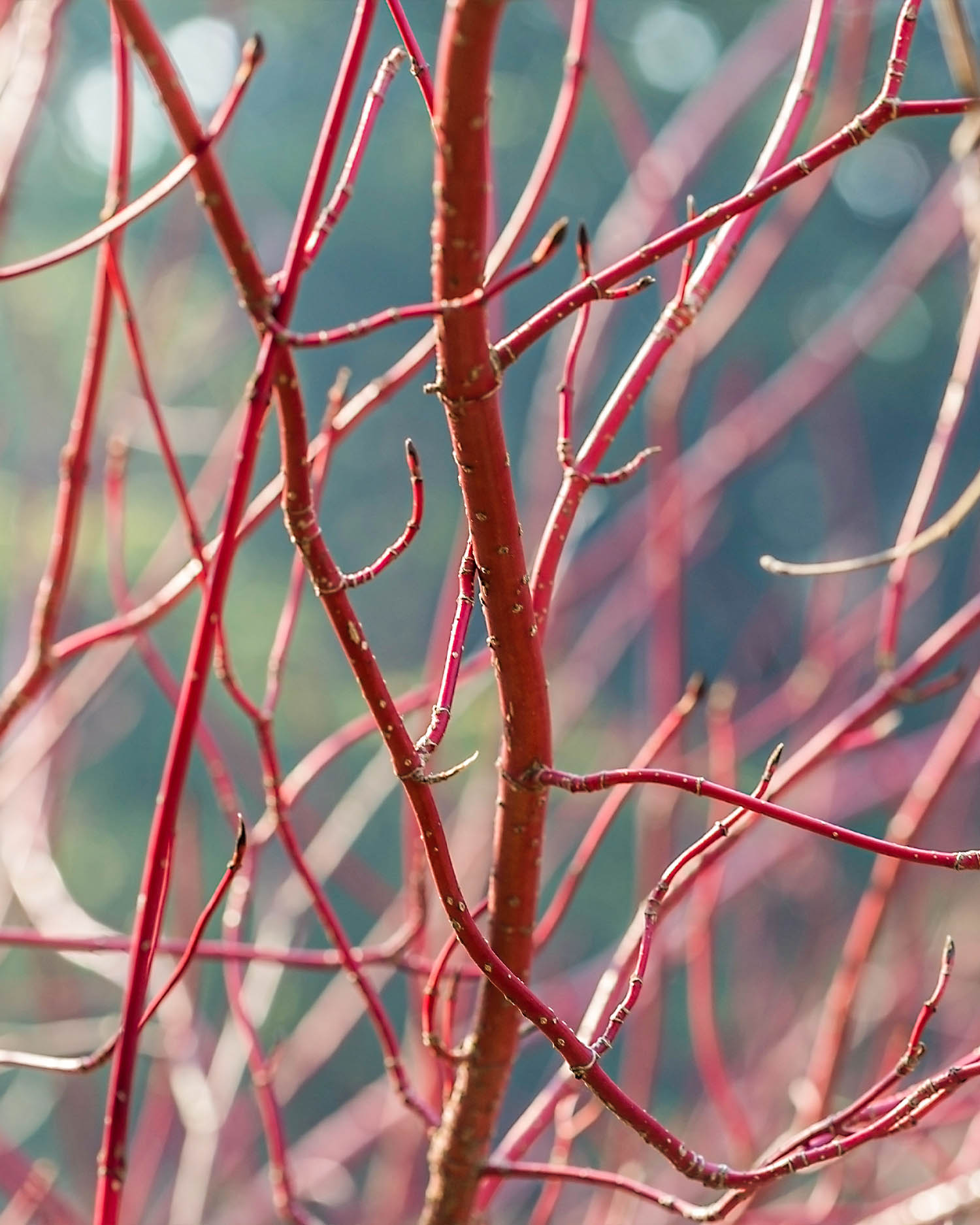
Elaeagnus x ebbingei ‘Viveleg’
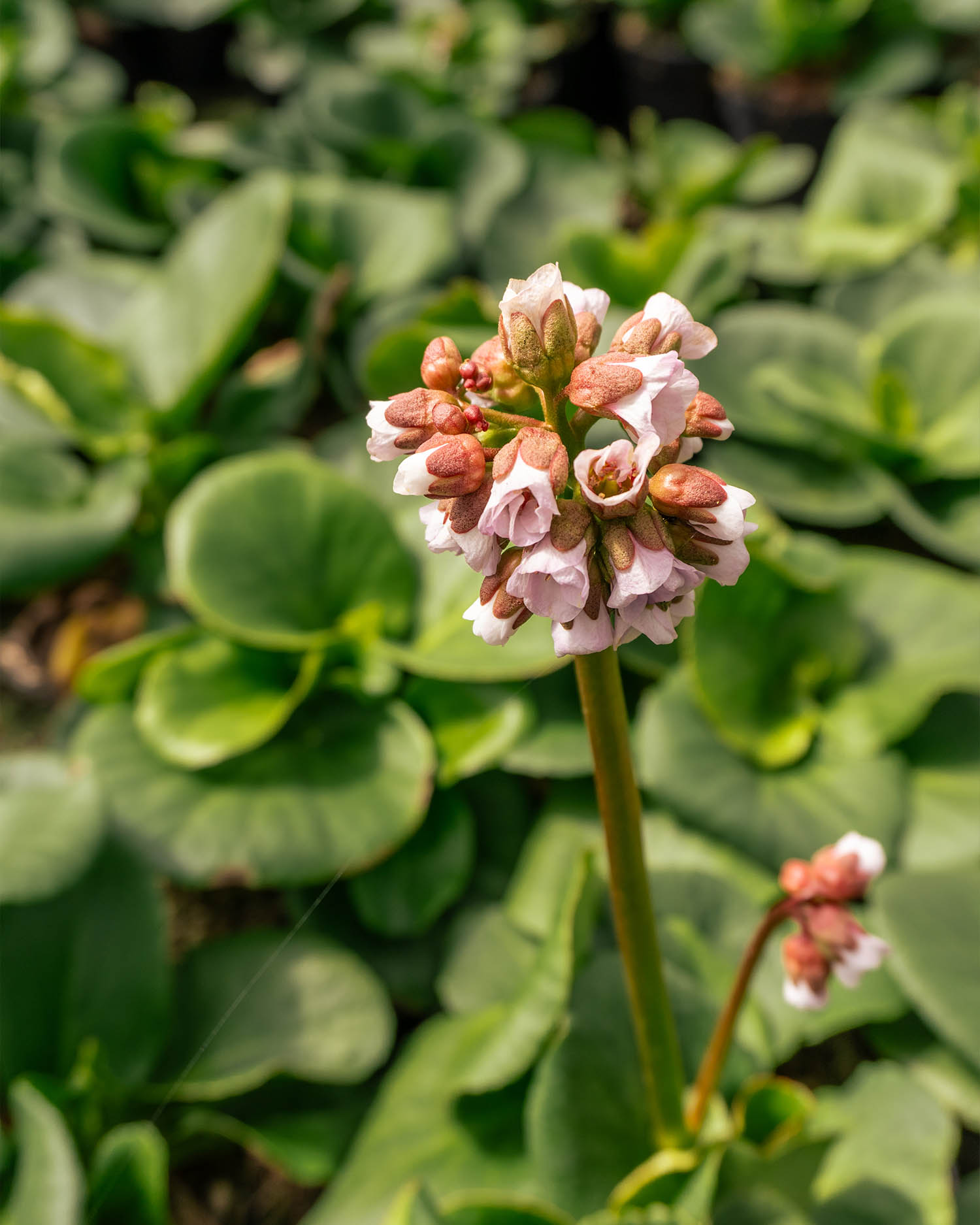
Bergenia cordifolia
Sun/heat tolerance
Sun tolerant plants have evolved to withstand their environment and the weather conditions associated with their native ecosystem. Often, plants that are tolerant of full sun grow leaves which are specifically designed to withstand a constant flow of UV radiation. Whereas too much sun can damage the chloroplasts of regular plants, sun tolerant plants will often have a thicker layer of cells within their leaves, which helps desensitise the plant to constant sunlight, allowing enough mitigation of UV radiation for the chloroplasts to process the energy absorbed. The leaves of some plants grown in full sun can also ‘substitute’ the cells on the top level of the plant, taking it in turns to collect sunlight, before retreating to a lower level of the palisade layer when they’ve maximised energy absorption.
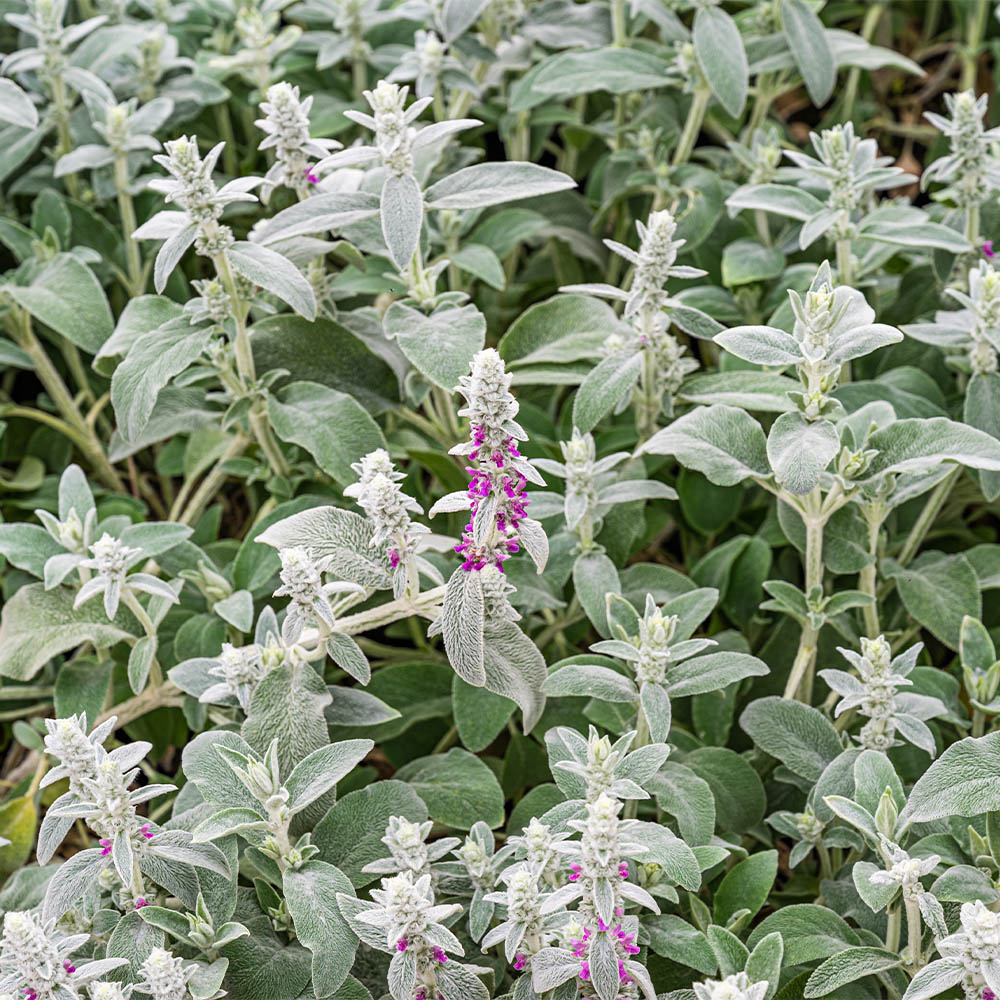
Stachys byzantina
Stachys byzantia
A drought tolerant, carpeting perennial with thick, soft, oblong-elliptic leaves and woolly stems. Produces either pink or purple flowers in summer, from June-August. Demands full sunlight exposure, an exposed planting site, and must be grown in well-drained soil. Is an H7 hardy plant, so will also tolerate extreme winter conditions, making it a strong all-round option for an exposed site, provided it gets enough sunlight.
Festuca glauca
An evergreen compact grass with intense blue, needle like foliage, and short, blue-green flower plums in summer that transition to golden brown overtime. Produces its brightest blue foliage when planted in full sun, making it perfect for planting in a sunny border. Can be planted in an exposed or sheltered setting, and will tolerate a moderate amount of wind. Can survive most UK winter conditions.
Perovskia ‘Blue Spire’
An erect, shrub-like, deciduous perennial with slender white stems that bear aromatic, grey-green leaves, and panicles of small, lavender blue flowers. Grows to a max height of 1-1.5 metres, in well-drained soil. Grows best in full sun, and is fully drought tolerant. Will survive moderately cold conditions. Works well as a border plant.
Stipa tenuissima
A deciduous grass that forms a neat tuft of wispy, upright leaves. Arching panicles of feathery, silver-green flowers appear in summer, which mature to buff and creates gentle movement in a planting scheme. Provides seeds for birds in winter, and works well in areas of prolonged sunlight. Can tolerate breezy conditions, but will need protection in particularly cold winters.
Euonymus japonicus ‘Microphyllus’
A dense, slow growing, rounded evergreen shrub, with small glossy green leaves. Provides a great, low maintenance alternative to Box (Buxus sempevirens). Generally wind tolerant, and thrives in full sun. Can tolerate coastal and urban locations, and moderately low winter temperatures.
Other tips for planting on exposed sites
Alongside choosing hardy plants that can withstand the extreme elements of exposed sites, there are several other ways in which the effects of wind, sun and cold can be mitigated.
Creating living windbreaks at the border of the planting scheme, with hardy, dense shrubs and hedges, such as Ilex aquifolium, Lonicera nitidia, or Euonymous fortuneii. Evergreen varieties, as opposed to deciduous, are recommended, due to the year round additional screening provided by the foliage. Regularly pruning, trimming and shaping these hedges will help to create a more dense foliage, which will better shelter the rest of the garden from the wind. Every one metre in height in a border hedge will create around three metres of wind resistance, enabling you to plant slightly less wind tolerant plants in front.
Regularly watering soil in prolonged periods without rainfall, even in winter, is essential in exposed sites to avoid the wind from drying out the soil. Quite often, plants that can tolerate the physical effects of the wind may suffer in excessively dry soils, so ensuring that the soils are regularly moist and that the roots have enough water to absorb is key to keeping your plants healthy throughout the year.
Removing damaged stems/leaves, should the plant become damaged by particularly strong winds or sun, is important to the overall health of the plant. Damaged foliage, branches and stems are vulnerable to pests and diseases, reducing the plants natural immunity. It’s important to remove any dead branches or foliage in any garden, but particularly prevalent in exposed locations where the likelihood of damage is greater.
Plant hardy trees to provide shaded areas, in order to limit the amount of direct sun exposure on your garden during the summer months. This will allow you greater choice with regards to plant choice, particularly if you can provide partial shade to varieties which may be able to survive windy and cold conditions, but struggle in full sun.
Planting on exposed sites provides plenty of challenges for garden designers and landscapers alike. It requires careful planning, considered plant choices, and regular maintenance to keep the plants healthy. Despite this, it is possible to create a stunning and thriving green space for residents and wildlife to enjoy for years to come.
For more information on plant choices for exposed projects, speak to the G Team today.

